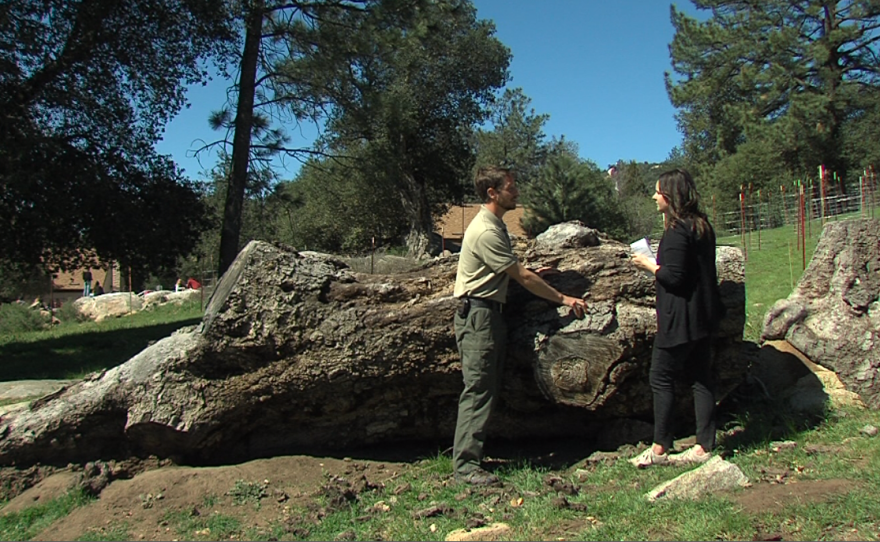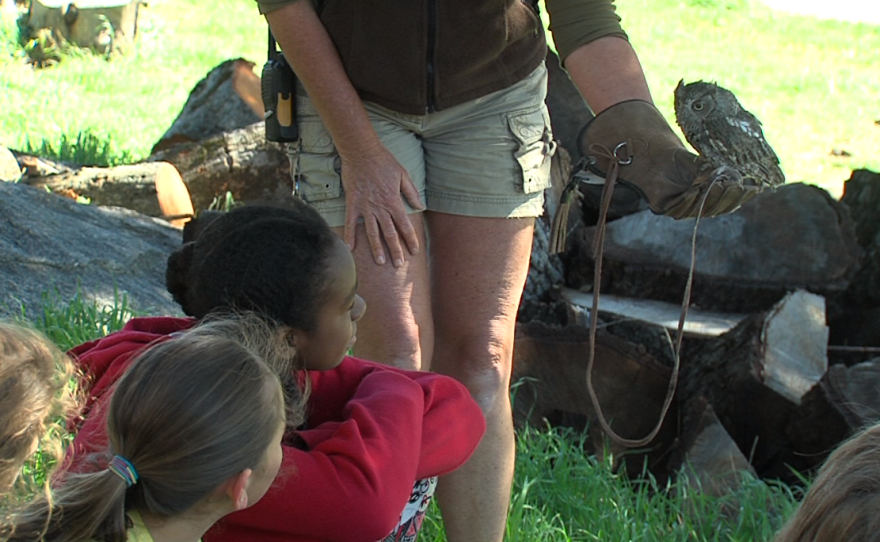Over their spring break, students from Roosevelt and Standley middle schools stood in a sunny amphitheater, their arms outstretched like branches that once shaded the area.
"What are our leaves doing for us?" asked Mason Hyland, an environmental scientist for California State Parks. The students call out "photosynthesis" in unison.
Hyland visits the Cuyamaca Outdoor School, where local sixth-graders have gone to camp for more than 70 years, a few times a month to lead students in a reforestation project.
San Diego County's forests have lost tens of thousands of trees — including 30 oaks that stood for generations at the camp — to drought, wildfires and Goldspotted Oak Borers. The invasive beetle came to the region in infested firewood about a decade ago. Today's campers sit atop dry, gray stumps pocked with small holes from the pest, instead of under leafy canopies.
In the fall, Hyland and camp staff developed a program to bring some of the oaks back.
"We had students just like you guys collect acorns last fall. We had them do a float test, where they were figuring out which acorns were viable and which ones were not," Hyland told the group. Healthy acorns sink. "And we put them into a plastic bag with a wet paper towel and we put them into a refrigerator to germinate."
Delicate white sprouts have emerged from the woody seeds. Each week, students dig small holes into a grassy lawn and place the acorns inside. The Roosevelt and Standley students took extra care to name their acorns, most after basketball players.

Rounds of fencing to protect the fresh plantings dot the camp. Hyland said campers have planted 5,000 acorns since the fall. He said he hopes 500 survive.
But Hyland said even more important is that the lesson's message sticks.
"There's a really fascinating world out there and they are a part of it," Hyland said. "It's a system that they are integrated in and it's in trouble and it needs to be managed. So without the next generation, or future generations, using this information to make decisions, our programs won't continue on into the future."
Students learned that the oak is a keystone species, meaning that its ecosystem would fail without it. Mountain lions eat the deer that eat the acorns. Squirrels replenish the tree system when they bury acorns.
"It's really interesting and also kind of sad, because the oak tree is the key element for nature and all the forest, and we want to keep that alive so we can have things to look at and see," said 12-year-old Roosevelt student Teagan Brokaw. She and her classmate picked a spot near a large rock, hoping it would help them find the tree as adults.

To wrap up the lesson, the students got a close-up look at a Western Screech Owl. It's one of three owl species still present in Cuyamaca Rancho State Park. Hyland said two others, the California Spotted Owl and Saw-whet owl, haven't been seen for some time because of tree loss.
Hyland said the Goldspotted Oak Borer that decimated their habitat isn't going anywhere, but that the new trees might fend them off long enough to reproduce. The beetles prefer the old-growth oaks that dominated the county's hillsides before the die-off.
Hyland's work with the campers isn't just planting trees, it's an experiment in saving the forest.







